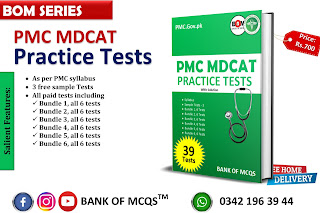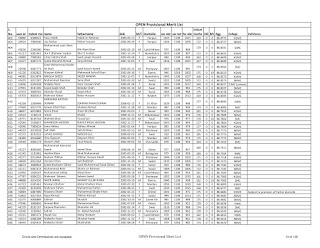3rd Period (Na to Ar)
Physical
and atomic properties
1. Na
– Mg – Al – Si – P – S – Cl – Ar
2. Metallic
radii for sodium, magnesium and aluminium.
3. Covalent
radii for silicon, phosphorus , sulphur and chlorine
4. Van
der wall radii for Argon.
5. Ionization
energy increase from left to right, exception→ Al and S.
6. Electronegativity
increases from left to right, exception → Ar
7. Sodium
, magnesium and aluminium are best conductors.
8. Silicon
is semiconductor.
9. Phosphorus,
sulphur, chlorine and argon are non-conductors.
10. Melting
point and boiling point values increase up to Al and then decreases.
Reaction
of 3rd period elements with water, oxygen and chlorine
11. Magnesium
and aluminium form layers when reacting with water.
12. Sodium
undergoes exothermically reaction with cold water.
13. Magnesium
reacts slowly with cold water and burn in steam producing Mg(OH)2
and MgO.
14. Magnesium
burnt in steam with its typical white flame.
15. Chlorine
dissolves in water and produces green solution.
16. Reaction
with
|
Metal
|
Water
|
Oxygen
|
Chlorine
|
|
Na
|
NaOH
|
Na2
O
Na2
O2
|
NaCl
|
|
Mg
|
Mg
(OH)2
MgO
|
MgO
|
MgCl2
|
|
Al
|
Al2
O3
|
Al2
O3
|
AlCl3
|
|
Si
|
Si
O2
|
Si
O2
|
SiCl4
|
|
P
|
|
P4
O6
P4
O10
|
PCl3
PCl5
|
|
S
|
|
SO2
|
S2Cl2
|
|
Cl
|
HCl
+ HOCl
|
Cl2O
, Cl2O7
|
|
17. Sodium
burns in oxygen with yellow flame.
18. Sodium
forms normal oxide and also per oxides.
19. MgO
and Al2O3 are of white colour.
20. Aluminium
burns in oxygen when it is powdered.
21. Silicon
will burn in oxygen if heated strongly well and SiO2 is produced.
22. White
phosphorus catch fire spontaneously in air with white flame and forms
phosphorus (lll) oxide and phosphorus (lV) oxide.
23. Sulphur
burns in oxygen with pale blue flame.
24. SO2
is colourless.
25. PCl3
→ colourless fuming liquid
26. PCl5 → straw colour solid
27. S2Cl2
→ orange, foul smelling liquid
|
||||||||||||||||||||||||||||||||||||||||||||||||
|
||||||||||||||||||||||||||||||||||||||||||||||||
|
||||||||||||||||||||||||||||||||||||||||||||||||
Acid,
Base Behavior of oxides;
28. Al2O3
does not react with but react with dilute acids and dilute alkali.
29. Al2O3
+ 6H+ → 2Al3+ +3H2O
30. Al2O3
+ 2OH- +3H2O → 2 [Al (OH)4 ] → aluminate
ion
31. SiO2
does not react with water, but it does react with concentrated alkalies forming
silicates SiO3-2.
32. NO2
react with water forming HNO2 and HNO3.
33. The
oxides of P, S and Cl except ClO2 react readily to form strongly
acidic solution
34. 2HClO4→ Perchloric acid
Reaction
of oxides with water, acid and bases;
35. Metal
oxides → Basic →Ionic
36. Non-Metal
oxides → Acidic → Covalent
37. Normal
oxides of most metal combine with acids to form salts. these are called basic
oxides.
38. Basic
oxides alts dissolve in water to give soluble hydroxides.
39. Acidic
oxides are oxides of non-metals such as CO2 and SO2.
40. Acidic
oxides react with bases to form salts and combine with water to form acids.
41. BeO
and Al2O3 are amphoteric.
Sodium
and magnesium hydroxides;
42. NaOH
→ soap, peteroleum and rubber industry
43. These
are white solids having soapy touch.
44. Sodium
hydroxides is only slightly soluble in water,
45. Sodium
hydroxides is the most soluble substances in water evolving a considerable
amount of heat due to the
46. formation
of a number of hydrates such as NaOH.2H2O
47. Magnesium
hydroxide is obtained as white ppt when caustic potash us added to a soluble
magnesium salt.
MgCl2 + 2KOH → Mg(OH)2
+2KCl
48. Solubility
of Mg(OH)2 is enhanced tremendously by the addition of NH4Cl
and NH4OH is formed.
49. 2NH4Cl
→ 2NH4+ + 2Cl-
50. Mg(OH)2
→ 2OH- + Mg2+
51. 2NH4+
+2OH- → NH4OH
Aluminium hydroxide
52. When
an alkali is added to aquaseous solution of aluminium salts, alumiunium
hydroxides get precipitated.
53. Al(SO4)3
+6NH4OH →2 Al (OH)3 + 3[ (NH4)2 SO4]
54. The
hydroxides is soluble in acids and caustic alkalies forming aluminates in the
later.
55. 2
Al (OH)3 + 2NaOH → 2Na[Al(OH)4]
56. The
Al (OH)3 can also be obtained
by hydrolysis of AlCl4 in excess water.
57. AlCl3
+ 3H2O →Al(OH)3 + 3HCl
58. The
Al (OH)3 has the ability to absorb various dyes forming colouring
matter known as lakes.
Other hydroxides
59. Silicon
hydroxide is a molecule with formula Si(OH)4.
60. Si(OH)4
is produced as; SiO2 + 2H2O
→ Si(OH)4 at 800 degree C.
61. Si(OH)4
is unstable and form polymerizes.







